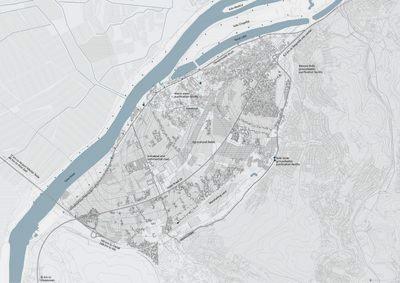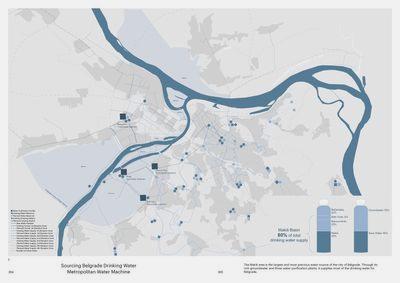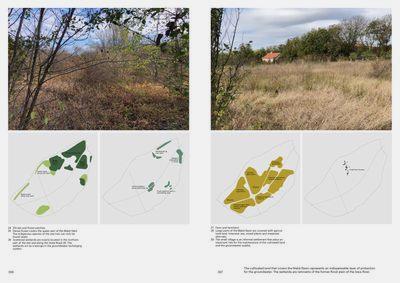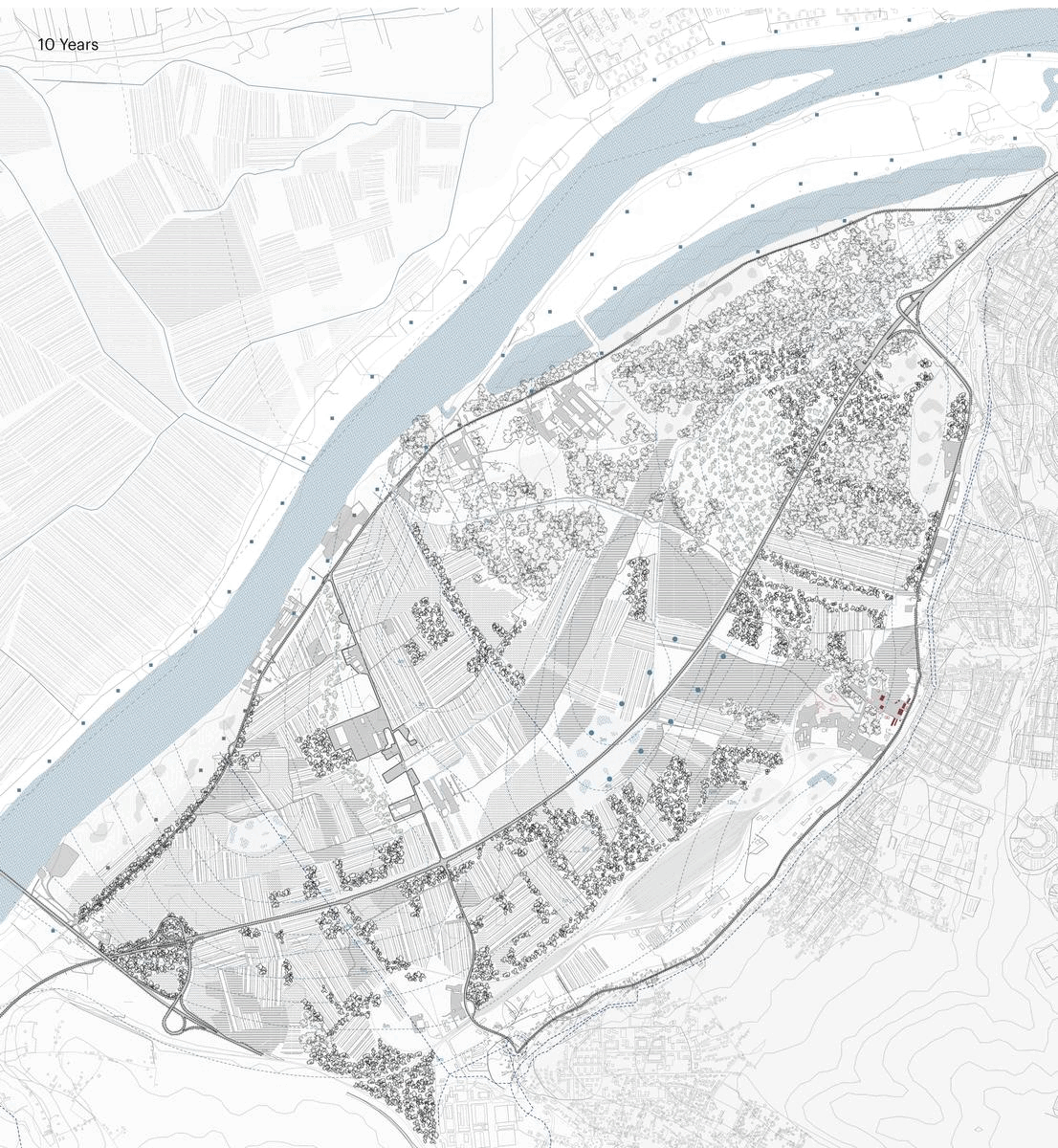Makiš Vodeni IzvoriMakiš Water Springs: Archipelago of Water BodiesMirjam Kupferschmid and Androniki Prokopidou

The Makiš Basin lies south of New Belgrade, between the foothills of the Šumadijan Mountains and the Sava River. It serves an essential role as Belgrade’s largest water reserve and catchment area. Most of the wetland is used for agriculture and forestry, but it also functions as a flood basin for the Sava River. The two main drinking water treatment facilities of Belgrade, Makiš 1 and Makiš 2, sanitise the water pumped from the ground near the riverbanks to feed into the city’s freshwater system.

Apart from small informal settlements that have formed along the drainage canals and in the forests, the vast plain of the Makiš Field is mostly uninhabited. A regional highway runs straight through the basin, connecting several large industrial complexes to the city and airport: logistics warehouses, pharmaceutical and petrol industries, and Belgrade’s marshalling yard. The construction of a new residential-business complex, dubbed Tesla City, was announced on 21 July 2017. Planned for 31,000 inhabitants, the new complex will start with a mixed-use residential and commercial area surrounding a 25-storey skyscraper. There are also plans to construct Belgrade’s first underground railway line between Tesla City and another large-scale proposal at Ada Huja, which would pass by the Belgrade Waterfront development. Both projects received heavy criticism from planning officials and architects, especially since both terminuses are un-urbanised heaths.
Today, Sava River’s centralised water purification process is exclusively dependent on the Makiš complex and its three facilities. The risk of a potential collapse of the drinking water supply of Belgrade is high. The project explores possibilities of hybridising the landscape of Makiš Basin, as the hydrological and operational backbone of the city is challenged by new development to arrive. Establishing a landscape system or Archipelago of Water with a wide range of water-related facilities, public sites, and land uses will allow the active protection of Belgrade’s drinking water. An Archipelago of Water Bodies is spread across the site, creating a sustainable decentralised public water supply landscape, less prone to failure than the existing centralised system. Resurfacing networked water, instead of hiding it in underground and technical infrastructure, will raise awareness about Makiš as a drinking water source on the metropolitan scale.

Future view over Makiš Springs.









